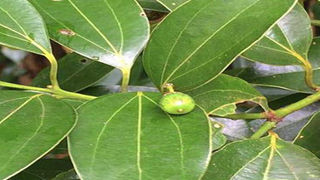
Cinnamon plant.
|Farming
Prime
Plant cinnamon and pick more
What you need to know:
- In Uganda, cinnamon grows well in the central region of the country.
- Its bark and the leaves are commonly used as spices in home kitchens and their distilled essential oils or synthetic analogy are used as a flavouring agent in the food and beverage industry.
Cinnamon is a common spice plant used in tea and food. The plant commonly known by its botanical name as Cinnamomum verum spp. belongs to the family of Lauraceae.
In addition to its use as a spice, the bark and leaves of the plant are used for the production of volatile oils.
Cinnamon is also an important ingredient in both the confectionary and cosmetics industries.
In Uganda, cinnamon grows well in areas around the Lake Victoria basin such as Mukono, Buikwe, Kayunga, Mayuge, Wakiso, Iganga, Jinja, Mpigi and Masaka districts. Few farmers are engaged in growing the plant yet it is commercially viable.
Species of cinnamon
According to experts, there are more than 250 known aromatic species of the genus Cinnamomum, which are primarily located in Asia and Australia. Many of these species are aromatic and used as flavouring agents. Out of these species, Cinnamomum zeylanicum Blume also known as Ceylon and Cinnamomum cassia J. Presl are the economically most important species.
Planting
Cinnamon can be grown by planting seeds or cinnamon seedlings in sandy loam soils with a mixture of humus or vegetative mould to get sweet and fragrant bark. Proper observation of proximity to water, humid conditions and salty water are good for the crop.
Seeds are sown thickly in nurseries where germination takes two to three weeks. When the seedlings are four months old, they are transplanted into bags. After 10 to 12 months, they are planted in the main field in pits 50cm deep and spacing of three metres apart.
Four to five seedlings can be planted in one pit which can be thinned later as the trees grow.
Manure
Cattle manure or compost of 20 kilogrammes per tree, per year may be applied to boost growth.
Inorganic fertilisers may be applied in the first year and gradually increased for grown up plants of 10 years or more.
Pruning
Plants are pruned at two to three years. Side shoots growing from the base are cut to encourage growth of more side shoots until the whole plant assumes the shape of a bush. The plant must be pruned every year to maintain good growth.
The trees can grow up to 50 feet high however, trees for commercial use are usually trimmed to a smaller height for easier harvest. A healthy tree can produce Cinnamon bark for about 45 years.
Weed control
Farmers are advised to weed twice a year and water the trees regularly. This can be by digging up the weeds using a hoe and when the plants are grown, farmers can also slash the field as well.
Harvesting and processing
For the preparation of spikes, the plants are harvested three years after planting when the shoots have grown 2 to 2.5cm in diametre and 1.5 to 2m in length. If the bark separates, the cutting is taken immediately in the early morning with sharp knife to prevent breaking and splitting of cut ends.
The first harvest may yield between 30 and 50 kilogrammes spikes per hectare per year. Better harvests are expected after 10 years when 170 to 200kg of dried spikes per hectare per year is obtained. Farmers must start harvesting when the bark turns brown.
When harvesting, the stems are coppiced, leaving one to two immature stems per bush to grow toward the middle of the base, which promotes spreading of the base. During processing the tops of the branches are lopped off for leaf oil distillation.
Challenges
The challenges faced by the farmers include birds that feed on the fruits. The leaf spot and die back diseases that are caused by Colletotrichum gloeosporioides are also common in farmer fields.
The grey blight caused by Pestalotiopsis palmarum and sooty mould caused by Phragmocapinus beetle is another challenge and these can be controlled through spraying using recommended pesticides.
Uses of cinnamon
The bark and leaves have a strong aroma which is used to spice food incense, perfumes, liquors and in pharmaceutical preparations especially to mask the unpleasant taste.
Cinnamon bark also contains oil and this oil is the organic compound that gives cinnamon its odour and flavour.
The oil got from the leaves is used in the manufacture of cheaper perfumes used in soap tooth pastes and hair oil. It is also a modifier in the flavouring industry.
Cinnamon has antibacterial, antiseptic, antiviral, antispasmodic and anti-fungal properties.
It is rich in iron, manganese, calcium and fiber. The bark is also packed with powerful antioxidants called polyphenols that help to lower blood sugar and regulate blood pressure. A mixture of pounded cinnamon and honey can cure a sore throat.
The bark is also used to treat digestive problems, nausea, vomiting, diarrhea, menstrual problems, and arthritis. Since it has the ability to kill bacteria, it is used in toothpaste, mouth wash and oral hygiene products.
Harvesting
For the preparation of quills, the plants are harvested three years after planting when the shoots have grown 2 to 2.5cm in diametre and 1.5 to 2m in length. If the bark separates readily, the cutting is taken immediately in the early morning with a sharp knife to prevent breaking and splitting of cut ends.
Origin
Cinnamon tree grows well in the central region of the country. It is not an indigenous tree but originates from tropical Asia.




